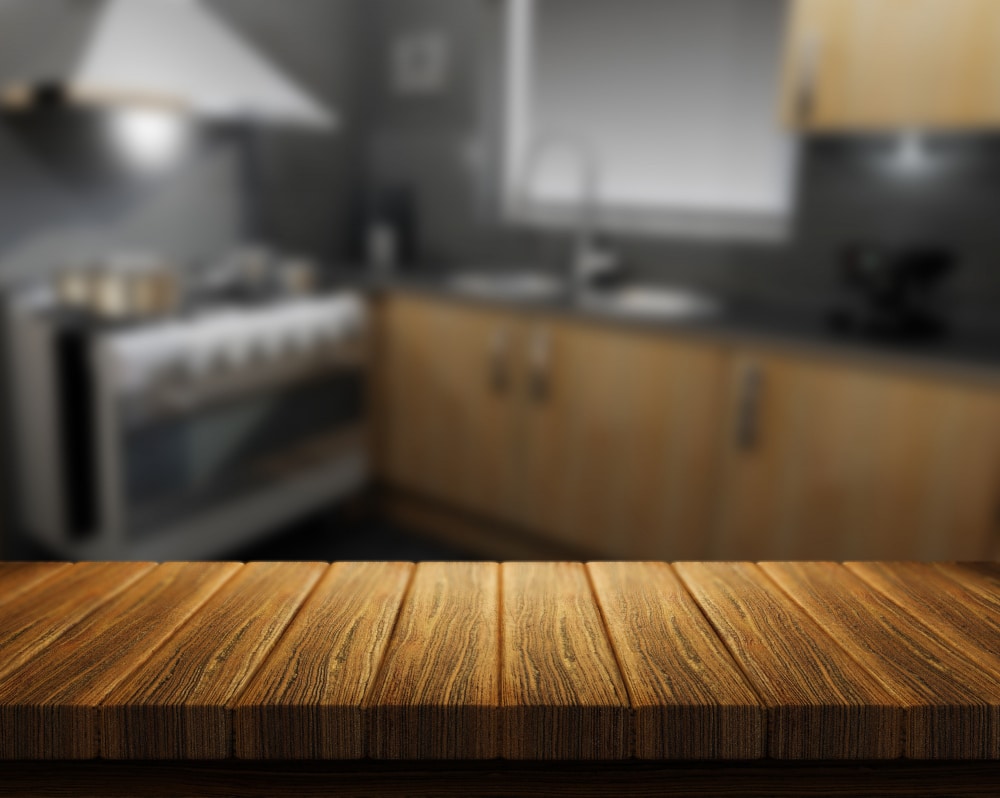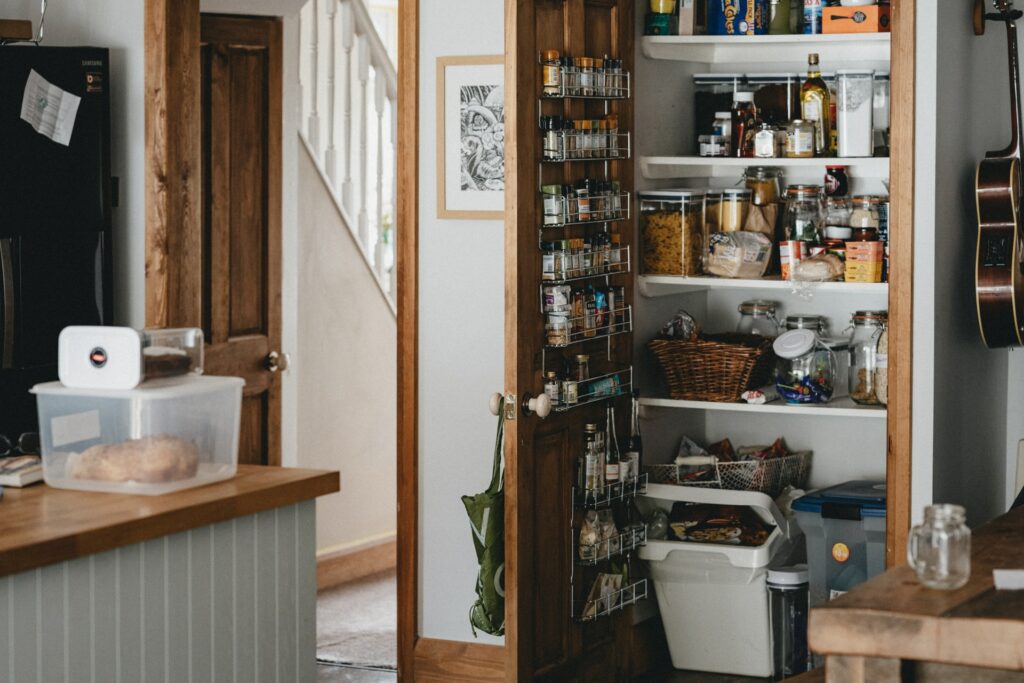
Avoid Kitchen Storage Mistakes: 20 Essential Tips
Kitchen storage mistakes are a common pitfall that can make even the most beautifully designed kitchen feel cluttered and dysfunctional. Whether you’re moving into a new home or looking to revamp your current space, understanding these pitfalls is crucial. This blog post dives deep into the heart of kitchen organization, highlighting the common mistakes you might be making and offering practical solutions to turn chaos into harmony. Get ready to transform your kitchen into a model of efficiency and style.
Contents
- 10 Essential Tips to Avoid Common Kitchen Storage Mistakes
- Assessing Your Storage Needs Incorrectly
- Ignoring the Power of Cabinet Heights
- Solving the Corner Cabinet Conundrum
- Decluttering and Organizing Cabinets
- Drawer Organization: A Must-Do
- Creating a Pantry Space
- Mastering Spice Storage
- Utilizing Vertical Space
- Enhancing Island Functionality
- Optimizing Under-Sink Storage
- Appliance Storage
- Accessible Upper Cabinets
- Trash and Recycling
- Customizing for Your Needs
- Lighting Your Storage Areas
- Seasonal Item Storage
- Incorporating Vertical Dividers
- Neglecting Drawer Height Variation
- Overlooking the Need for Adjustable Shelving
- Forgetting to Plan for Charging Stations
- Conclusion:
- Frequently Asked Questions
10 Essential Tips to Avoid Common Kitchen Storage Mistakes
Assessing Your Storage Needs Incorrectly
One of the first steps in avoiding kitchen storage mistakes is to accurately assess your needs. Every kitchen item, from the smallest utensil to the largest appliance, needs a designated spot. Start by taking inventory of your belongings and plan for ample cabinets, drawers, and shelves. Remember, it’s better to have a little extra space than not enough.
Ignoring the Power of Cabinet Heights
Mix and match cabinet heights to maximize your kitchen’s storage potential. Tall cabinets are perfect for storing less frequently used items or bulk goods, while shorter cabinets can keep daily essentials within reach. This variety not only optimizes storage but also adds visual interest to your kitchen.
Solving the Corner Cabinet Conundrum
Corner cabinets are notorious for being underutilized due to their awkward access. Incorporating lazy Susans, pull-out shelves, or diagonal cabinets can make these tricky spaces fully functional. These solutions ensure that every inch of your kitchen serves a purpose.
Decluttering and Organizing Cabinets
Overstuffed cabinets are a recipe for frustration. Regular decluttering paired with the use of dividers, organizers, or pull-out trays can keep your storage spaces orderly. This approach not only makes items easier to find but also protects your belongings from damage.
Drawer Organization: A Must-Do
Drawers offer a versatile storage solution that, when organized properly, can greatly enhance your kitchen’s functionality. Investing in drawer dividers or utensil organizers helps in maintaining order, making cooking and cleaning a breeze.
Creating a Pantry Space
Not every kitchen comes with a built-in pantry, but that doesn’t mean you should forego food storage planning. Designate an area for dry goods and canned items using shelves, cabinets, or a standalone unit. This organized approach ensures that ingredients are always within reach.
Mastering Spice Storage
An organized spice storage system is key to a seamless cooking experience. Whether you opt for spice racks, pull-out drawers, or a dedicated cabinet, ensuring easy access to your spices can dramatically improve your culinary endeavors.
Utilizing Vertical Space
Vertical space is often overlooked in kitchen design. Installing hooks, shelves, or pegboards can provide homes for pots, pans, and utensils, freeing up valuable cabinet and drawer space.
Enhancing Island Functionality
If your kitchen features an island, make sure it’s working as hard as the rest of your space. Adding storage solutions like cabinets, drawers, or open shelving can turn your island into a multifunctional powerhouse.
Optimizing Under-Sink Storage
The area under the sink presents unique challenges due to plumbing fixtures. However, with the right organizers, pull-out trays, and stackable bins, this space can be efficiently utilized.
Appliance Storage
Designated areas for small appliances can keep your countertops clear and your kitchen looking neat. When planning your kitchen, consider creating specific spots for blenders, toasters, and other frequently used appliances.
Accessible Upper Cabinets
Ensure upper cabinets are within easy reach. If they’re too high or deep, they can become impractical. Options like pull-out shelves can make these spaces more user-friendly.
Trash and Recycling
A well-planned space for trash and recycling is essential for kitchen cleanliness. Concealed pull-out bins can help maintain the aesthetic of your kitchen while making waste management easier.
Customizing for Your Needs
Generic storage solutions may not fit your specific needs. Tailor your storage to suit your cookware, utensils, and gadgets for a kitchen that truly works for you.
Lighting Your Storage Areas
Proper lighting inside cabinets and drawers can make it easier to find what you need. Consider installing LED lighting to brighten up your storage spaces.
Seasonal Item Storage
Seasonal items can clutter your kitchen if not stored properly. Utilize less accessible areas or invest in storage solutions specifically for these items.
Incorporating Vertical Dividers
Vertical dividers in cabinets can keep baking sheets, cutting boards, and lids organized and accessible. This simple addition can make a big difference in your kitchen’s functionality.
Here are three additional kitchen storage mistakes to consider:
Neglecting Drawer Height Variation
Failing to vary drawer heights is a missed opportunity in kitchen design. Different drawer heights allow for the storage of various items, from flatware to pots and pans. Incorporating a mix of shallow and deep drawers can enhance your kitchen’s functionality by providing a suitable place for every item.
Overlooking the Need for Adjustable Shelving
Fixed shelving can limit storage flexibility in your kitchen. Adjustable shelves offer the ability to change the height and spacing based on your changing needs, accommodating everything from tall pitchers to small spice jars. This adaptability is key to maintaining an organized and efficient kitchen.
Forgetting to Plan for Charging Stations
In today’s tech-driven world, a common oversight in kitchen design is the lack of dedicated charging stations for devices such as smartphones, tablets, and laptops. Planning a specific area with outlets for charging can keep countertops clear and ensure your devices are always powered up and within reach without cluttering your kitchen workspace.
Conclusion:
Avoiding kitchen storage mistakes begins with a thorough assessment of your needs and a bit of creativity in utilizing available spaces. By addressing these common pitfalls, you can create a kitchen that’s not only beautiful but highly functional. Remember, a well-organized kitchen is the key to a smoother, more enjoyable cooking experience.
Are you ready to tackle your kitchen’s organizational challenges? Follow us on Instagram for more tips and inspiration to transform your space into the kitchen of your dreams.
Frequently Asked Questions
Q1: How do I decide which items to keep in my kitchen?
Start by sorting through your items and decide what you use regularly. Items that haven’t been used in the past year might be better off stored elsewhere or donated. Keep your kitchen stocked with items you use often to ensure everything has its place.
Q2: Can I make my small kitchen more functional with these tips?
Yes, absolutely! Many of these tips, like using vertical space and organizing drawers, are especially beneficial in small kitchens. They can help you make the most of limited space and keep everything you need within reach.
Q3: What’s the best way to organize pots and pans?
Consider hanging pots and pans on a rack above your kitchen island or on a wall-mounted rack. This not only saves cabinet space but also keeps them easily accessible. For cabinets, use organizers or dividers to keep lids and pans neatly stored.
Q4: How often should I declutter my kitchen?
Decluttering your kitchen at least once a year can help keep it functional and organized. However, doing a quick review every season allows you to adjust to changing needs and get rid of items that no longer serve a purpose.
Q5: Are open shelves a good storage solution?
Open shelves can be a stylish and functional storage solution, offering easy access to frequently used items. They encourage you to keep your kitchen tidy and can make a small space feel more open. Just be mindful to not overcrowd them to maintain a clean look.

